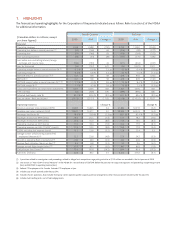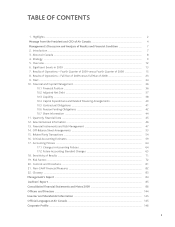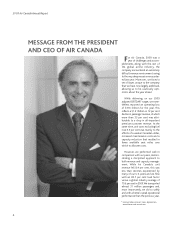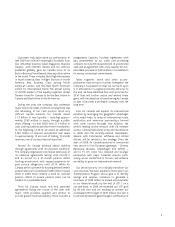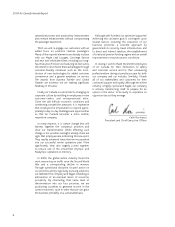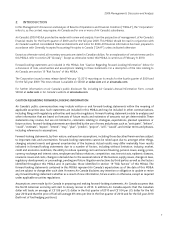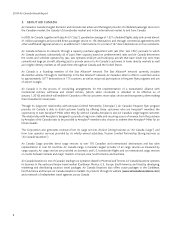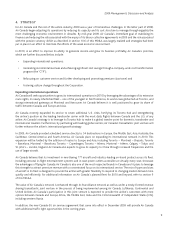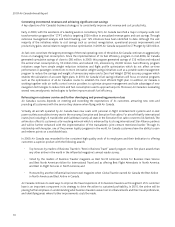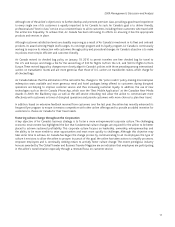Air Canada 2009 Annual Report Download - page 12
Download and view the complete annual report
Please find page 12 of the 2009 Air Canada annual report below. You can navigate through the pages in the report by either clicking on the pages listed below, or by using the keyword search tool below to find specific information within the annual report.2009 Air Canada Annual Report
12
5. OVERVIEW
Air Canada’s results of operations for the fourth quarter of 2009 and the full year 2009 are discussed in section 7 and 8,
respectively, of this MD&A.
In summary, Air Canada’s results of operations for 2009 compared to 2008 are as follows:
Air Canada recorded a net loss of $24 million or $0.18 per diluted share in 2009 compared to a net loss of
$1,025 million or $10.25 per diluted share in 2008. The net loss recorded in 2009 included foreign exchange gains of $657 million
which were primarily attributable to a stronger Canadian dollar at December 31, 2009 versus December 31, 2008.
The December 31, 2009 noon day exchange rate was US$1 = C$1.0466 while the December 31, 2008 noon day exchange
rate was US$1 = C$1.2246.
In 2009, Air Canada recorded an operating loss of $316 million, a deterioration of $277 million from the operating loss
(before a provision for cargo investigations and proceedings) of $39 million recorded in 2008. EBITDAR amounted to
$679 million in 2009 compared to EBITDAR (before a provision for cargo investigations and proceedings) of $934 million
in 2008, a decrease of $255 million.
In 2009, Air Canada recorded operating revenues of $9,739 million, a decrease of $1,343 million or 12% from the operating
revenues of $11,082 million recorded in 2008. The decrease in operating revenues was mainly due to a passenger revenue
decline of $1,214 million or 12% from 2008. The passenger revenue decrease was due to a lower system yield and reduced
traffi c. Yield declined 7.6% from 2008. Traffi c decreased 5.2% on a capacity reduction of 4.4%, resulting in a passenger load
factor decrease of 0.7 percentage points. RASM decreased 8.4% over 2008 due to the yield decline and, to a lesser extent,
the decrease in system passenger load factor.
In 2009, Air Canada recorded operating expenses of $10,055 million, a decrease of $1,066 million or 10% from the operating
expenses of $11,121 million recorded in 2008. The decrease in operating expenses was achieved in spite of $230 million in
additional expenses related to the weaker Canadian dollar versus the U.S. dollar. Reduced fuel expense of $971 million or
28% versus 2008 was the main factor in the year-over-year decrease in operating expenses. Operating expense reductions
were recorded in all major line categories with the exception of aircraft maintenance, aircraft rent, capacity purchase fees
paid to Jazz and communications and information technology expenses.
In 2009, CASM decreased 5.4% from 2008. Excluding fuel expense, CASM increased 3.3% from 2008. The value of the
Canadian dollar versus the U.S. dollar was weaker in the fi rst three quarters of 2009 and stronger in the fourth quarter of
2009 when compared to the same periods in 2008. For the full year 2009, the overall impact of a weaker average Canadian
dollar versus the U.S. dollar on U.S. denominated operating expenses accounted for approximately 40% of the CASM
increase (excluding fuel expense) year-over-year. Other factors in the CASM increase (excluding fuel expense) included a
growth in aircraft maintenance expense, increased Jazz CPA expense, higher unit costs of ownership, and the impact of the
capacity reduction. The 3.3% increase in CASM (excluding fuel expense) for 2009 was in line with 3.0% to 3.5% CASM
(excluding fuel expense) increase projected in Air Canada’s news release dated November 6, 2009.


